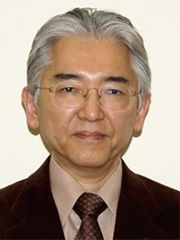Research Results
Treatment with less fear of side effect and economic burden
Nano capsules allows the direct treatment of the affected parts of the body FY2016

- Kazunori Kataoka (Professor, Graduate Schools of Engineering and Medicine, The University of Tokyo)
- CREST
- Creation of Bio-Devices and Bio-Systems with Chemical and Biological Molecules for Medical Use "Development of Novel Nano-structured Device for Gene and Drug Delivery" Research Director (2001-2006)
- CREST
- Establishment of Innovative Manufacturing Technology Based on Nanoscience "Development of Manufacturing Processes of Supramolecular Nanodevices for Practical Gene Therapy" Research Director (2006-2011)
- FIRST
- "Development of Innovative Diagnostic and Therapeutic Systems Based on Nanobiotechnology" Core Researcher (2009-2013)
Seeking to establish medical treatment using nano-biotechnology
In the film Fantastic Voyage, made in the USA in 1966, people are shrunk down and enter the human body with the aim of curing a patient's serious medical condition̶ at the time, a revolutionary idea. The film was highly acclaimed. Of course, Fantastic Voyage was intended as science fiction, but it seems that now a medical technology not too dissimilar to this science fiction movie is poised to become reality. Moreover, this new technology functions on the nano level: even smaller than the microscopic reality depicted in the film. Many people do not have an immediate grasp on how small the nano scale actually is. The cells of the human body are around 6,000 to 25,000 nm in size, while the influenza virus is around 100 nm. Clearly, this represents some remarkably small units.
Professor Kazunori Kataoka is working to create nano-capsules on the atomic and molecular levels, and to establish drug delivery systems (DDS) and gene delivery systems capable of introducing drugs or genes directly into the diseased part. This research received the Humboldt Award in March 2012, and in July of the same year was awarded the 9th Leo Esaki Prize for outstanding world-acclaimed research contributions in the field of nanotechnology.
Nano-medicine: any time, any place, anyone
The aim of nano-biotechnology is not simply curing illness, but a rapid return to society with a minimum of burden placed on the patient. For this reason, researchers aim to construct a system based on 4 research strands: a nano-diagnosis system to diagnose illness, a nano-DDS system to deliver pharmacological agents to the affected areas of the body, a minimally invasive nano-treatment system for surgical treatment of affected areas using the nano-DDS, and a nano-regenerative system to regenerate body parts lost to disease.
By achieving all these, it will be possible to reduce side effects and shrink overall medical care costs by reducing the costs of treatment and hospital stays, as well as cutting hospital stay time. It seems that nano-medicine, one of the ultimate aims of nano- biotechnology therapy for anyone, any time, any place will soon reach viability.
Pieces of macromolecules were clustered together to form the capsule like a solid puzzle

The nano-DDS: delivering drugs directly into the nucleus of cancer cells
Nano-biotechnology is extremely effective for treating cancer, which is the leading cause of death in Japan. Aside from surgery, prescription of anti-cancer drugs is the most common treatment for cancer at present, but since these drugs attack not only cancer cells but also healthy cells, they are accompanied by harsh side effects, which is a major drawback. Due to this, the patient is forced to forgo a normal lifestyle, and in addition to high medical expenses, these can also inflict significant damage.
On the other hand, with a nano-DDS, not only are the drugs delivered to the cancer cells, but they are able to directly affect the nuclei of these cells, leading to a massive reduction of side-effects. Moreover, since the effect is achieved using a far smaller quantity of the drug, the economic burden of treatment is also reduced.
Also, with this technology, since it is capable of carrying not only drugs but also genes, it is possible to enable control of cell differentiation within the body when combined with regenerative medicine using iPS cells (currently the focus of a great deal of attention). Aside from this, it also allows simple monitoring of what is occurring inside the body, enables surgery in regions where the human hand cannot reach, and so on. In short, this system is a long-held dream that will change the very fundamentals of medical treatment.
Ultra-early detection, precision diagnosis, and pinpoint treatment of cancer

Project to construct a system rather than make products
This project was first developed as CREST, which is led by Professor Kataoka, and has made substantial progress under the Funding Program for World-Leading Innovative R&D on Science and Technology program (the FIRST program) operated by Japan's Cabinet Office.
Moreover, he took this result step further under the COI program named "Development of a nanomachine brings a smart life care into reality" by MEXT. In Professor Kataoka's opinion, the single most significant issue is the construction of system.
Of course, development of molecules to carry drugs is important, but establishing a medical treatment system that uses these drugs is what we must aim for, he believes. In short, the objective is not construction of any of the respective components, but rather the creation of a system unifying all these parts.
If nano-biotechnology systems, techniques, know- how, and patents and so on (which possess the potential to become central to medical science) are dominated by various other countries, it is not unthinkable that Japan might be forced to pay vast compensation for these. Conversely, becoming a global leader in these technologies will enable Japan to assume a major leadership role. The project that Professor Kataoka is driving forward is nothing less than a state project.
